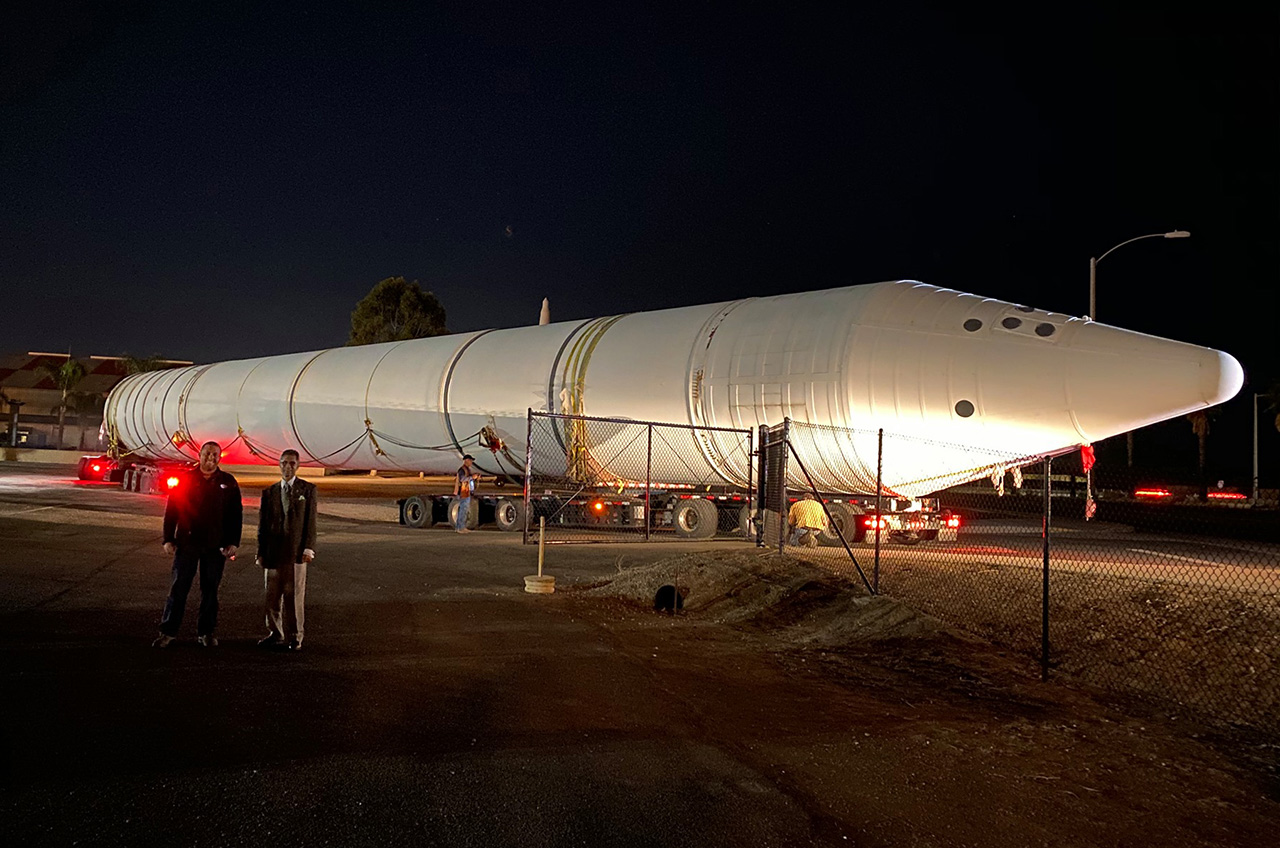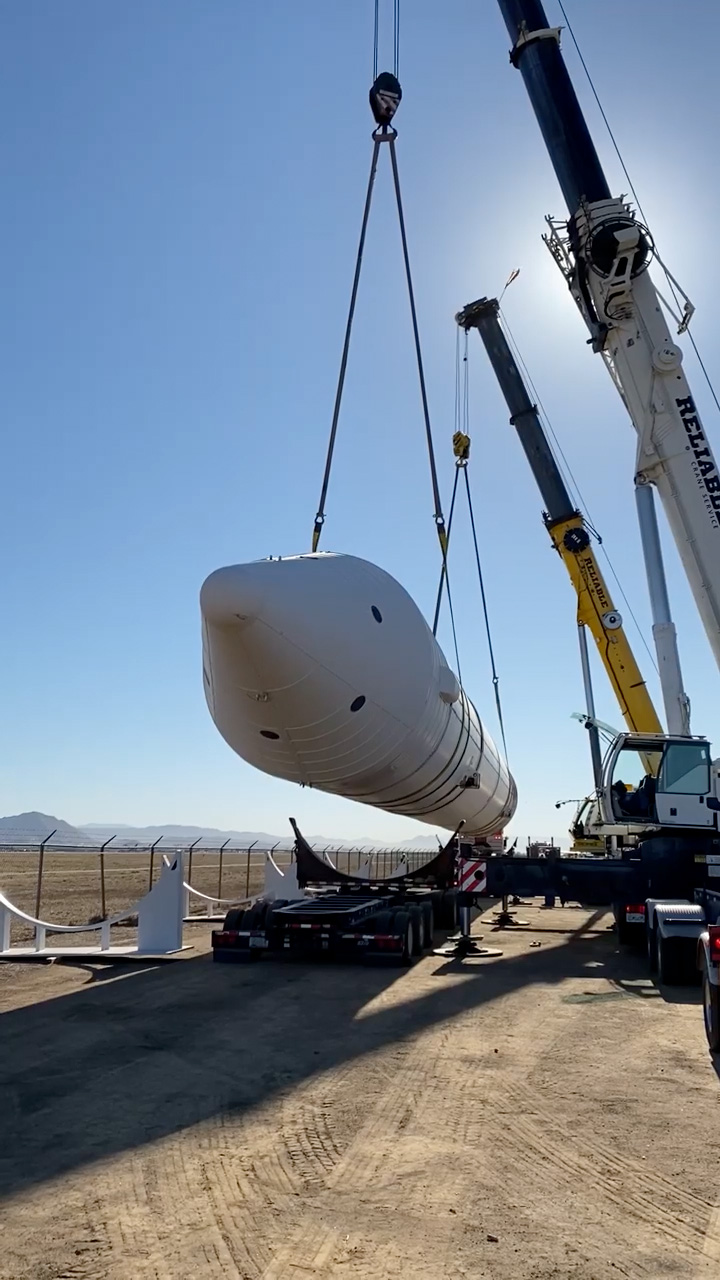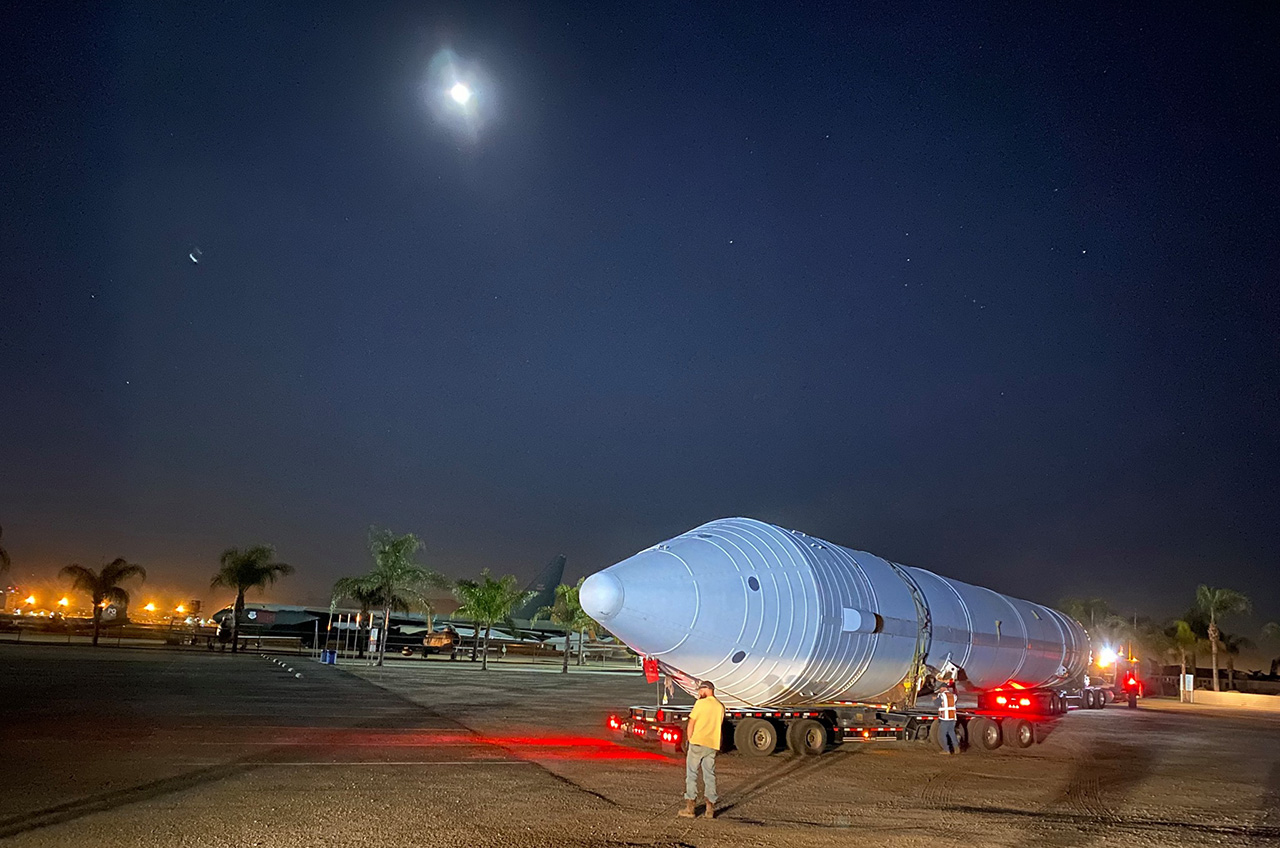Space shuttle rocket booster to be part of astronaut memorial at California museum

A space shuttle solid rocket booster has been delivered to a Southern California museum to establish a new outdoor memorial to NASA's fallen astronauts.
The March Field Air Museum in Riverside, California, took delivery of the massive space shuttle artifact late on Tuesday night (Dec. 1), when it was trucked the 100 miles (160 km) from NASA's Armstrong Flight Research Center at Edwards Air Force Base to the museum. Large cranes then hoisted the booster off its transport the following day.
"The NASA space shuttle rocket booster was unloaded and placed on display stands. In the near future, it will be the centerpiece of a space shuttle memorial located at the north end of the museum property," the March Field Air Museum announced on Facebook on Wednesday.
Related: 10 amazing space shuttle photos

Over the next few months, a garden will be added surrounding the 149-foot-long (45-m) booster in memory of the two space shuttle crews who were lost in flight. The space shuttle Challenger and Columbia tragedies in January 1986 and February 2003, respectively, claimed 14 lives, including the first teacher selected to launch into space and the first Israeli astronaut. The loss of the Challenger was traced back to a faulty o-ring seal in one of its solid rocket boosters.
"[The solid rocket booster] will add a whole dimension of science, technology, engineering, math and space for our 25,000 annual student visitors," Jamil Dada, president of the museum's board, told the local Press-Enterprise newspaper. "It will elevate our museum to another level."
Prior to arriving at the March Field Air Museum, the booster was displayed at the Kennedy Space Center Visitor Complex in Florida from 1994 through the end of NASA's space shuttle program in 2011.
Get the Space.com Newsletter
Breaking space news, the latest updates on rocket launches, skywatching events and more!
Once part of a pair, the booster and its twin were originally moved to NASA Armstrong in 2012, where they were held for possible use with the vertical display of the retired shuttle Endeavour at the California Science Center in Los Angeles. Engineering studies, though, determined that a flight-worthy pair of boosters was need to safely stand up the orbiter, leading to the donation of such by NASA and Northrop Grumman in September 2020.
With the older boosters no longer needed for the Endeavour exhibit, the California Science Center released them to go to other museum homes. The companion booster to the one now at the March Air Field Museum has been on display at the Pima Air & Space Museum in Tucson, Arizona since December 2016.

The March Field Air Museum's sold rocket booster, like the one now at Pima, was assembled for display from a combination of flight-like, test and mock hardware. The forward and aft segments are made of steel, like the parts that were used to launch the space shuttle. The two center segments are filament-wound cases of the type that was planned for use at Vandenberg Air Force Base in California. (West Coast shuttle flights were cancelled in the wake of the Challenger tragedy.)
The forward skirt, frustum and nose cap are fiberglass and sheet metal, as are the aft skirt and nozzle.
In addition to the newly-arrived booster, the March Field Air Museum also exhibits several other NASA and shuttle artifacts, including engineering and management consoles from Firing Room 2 at Kennedy Space Center's Launch Control Center in Florida and the nozzle from a space shuttle main engine. The museum, which is located adjacent to the March Air Reserve Base, is home to the largest display of military aircraft in Southern California, including a Lockheed SR-71 Blackbird high-altitude aircraft of the type operated by the U.S. Air Force and NASA.
Follow collectSPACE.com on Facebook and on Twitter at @collectSPACE. Copyright 2020 collectSPACE.com. All rights reserved.
Join our Space Forums to keep talking space on the latest missions, night sky and more! And if you have a news tip, correction or comment, let us know at: community@space.com.

Robert Pearlman is a space historian, journalist and the founder and editor of collectSPACE.com, a daily news publication and community devoted to space history with a particular focus on how and where space exploration intersects with pop culture. Pearlman is also a contributing writer for Space.com and co-author of "Space Stations: The Art, Science, and Reality of Working in Space” published by Smithsonian Books in 2018.In 2009, he was inducted into the U.S. Space Camp Hall of Fame in Huntsville, Alabama. In 2021, he was honored by the American Astronautical Society with the Ordway Award for Sustained Excellence in Spaceflight History. In 2023, the National Space Club Florida Committee recognized Pearlman with the Kolcum News and Communications Award for excellence in telling the space story along the Space Coast and throughout the world.










